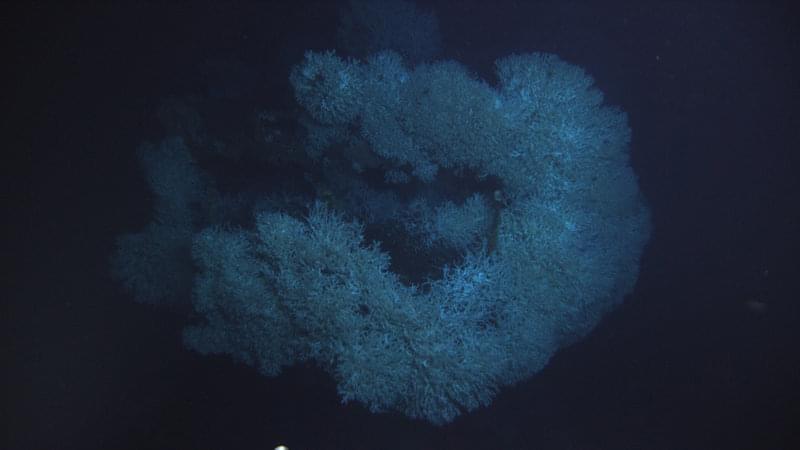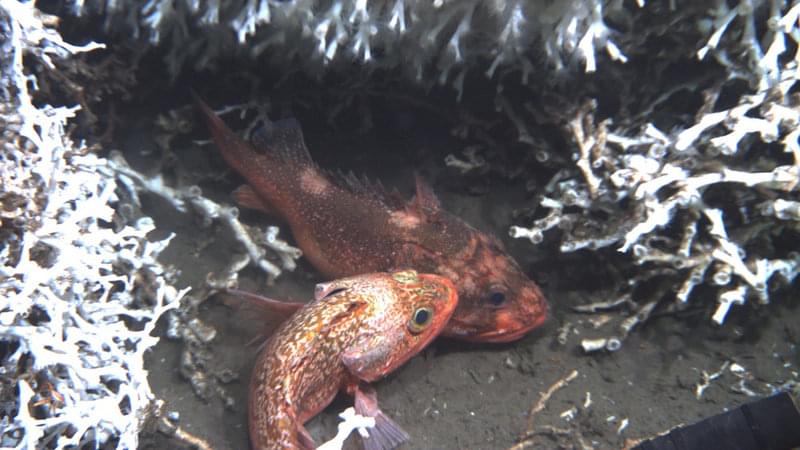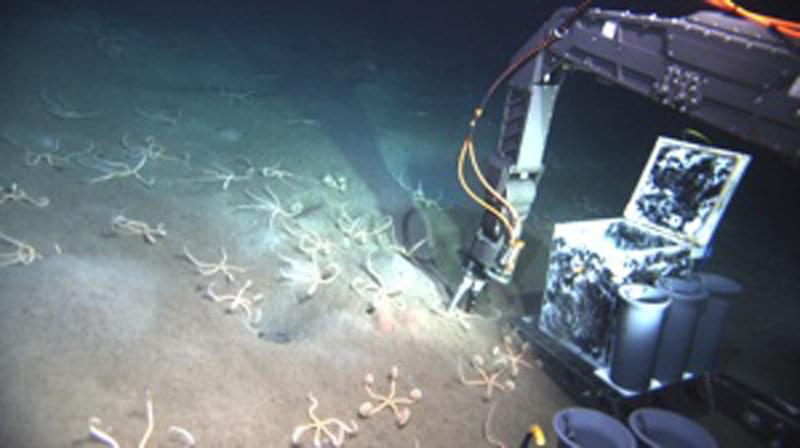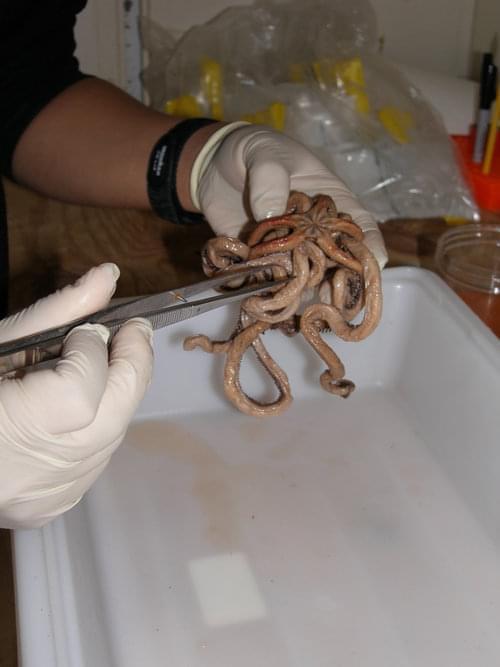
By Sheli Smith, PhD - PAST Foundation
October 31, 2010

The graceful fantail of the ship is completely obscured by Lophelia communities. Image courtesy of Lophelia II 2010 Expedition, NOAA-OER/BOEMRE. Download larger version (jpg, 272 KB).

Black-bellied rose fish find shelter within a mass of Lophelia. Image courtesy of Lophelia II 2010 Expedition, NOAA-OER/BOEMRE. Download larger version (jpg, 468 KB).
There are over 2000 species of brittlestars around the world. Some associate with only one type or species of coral, while other brittlestars may associate with several different species of coral, still others have evolved to simply live on substrates without any connection to corals. Walter’s doctoral research focused on seamounts in the North Atlantic, where he was able to study large communities of brittlestars and their symbiotic relationships with coral.
On this cruise Walter has been able to partner his research with another scientist, Andrea Quattrini of Temple University; Andrea is studying the diversity of various corals observed during their underwater research and the population genetics of Callogorgia, a coral associated with a specific brittlestar. Their combined studies will enhance our understanding of the population structure and connectivity of communities of corals and their associated animals in the Gulf of Mexico.

A “constellation“ of brittestars on the seafloor (538 meters). Image courtesy of Lophelia II 2010 Expedition, NOAA-OER/BOEMRE. Download larger version (jpg, 346 KB).

Close up of Walter Cho examining a brittlestar in the lab. Image courtesy of Lophelia II 2010 Expedition, NOAA-OER/BOEMRE. Download larger version (jpg, 6.5 MB).
When asked if the research team were finding lots of brittlestars in the Gulf of Mexico, Walter answered, “We are seeing about a dozen different species and most of those are associated with corals.” During this cruise, one of the main focus species has been Asteroschema sp., which live on the coral Callogoria sp. However, during yesterday’s dive, a large constellation of brittlestars sat off the shipwreck on the seafloor. Walter went on to explain that the entire ecosystem is connected. If the coral that the brittlestars live on die out, so do the brittlestars, not to mention all the other species that thrive in a specific ecosystem.
Finally we asked Walter to pass on some insight about a career in marine biology. “Pursue what interests you. Work hard at your passion.”Bathymodiolus, these mussels do not directly consume food. Instead, they are nourished by symbiotic bacteria that also produce energy from methane, similar to their relatives that form mats.